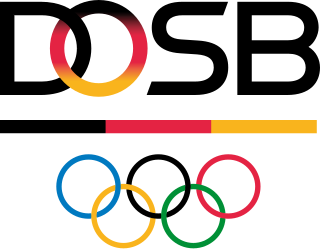
The Scout movement in Germany consists of about 150 different associations and federations with about 260,000 Scouts and Guides.

The German Olympic Sports Confederation was founded on 20 May 2006 by a merger of the Deutscher Sportbund (DSB), and the Nationales Olympisches Komitee für Deutschland (NOK) which dates back to 1895, the year it was founded and recognized as NOC by the IOC.

The Factory Workers' Union of Germany was a trade union in Germany.
The General Commission of German Trade Unions was an umbrella body for German trade unions during the German Empire, from the end of the Anti-Socialist Laws in 1890 up to 1919. In 1919, a successor organisation was named the Allgemeiner Deutscher Gewerkschaftsbund, and then in 1949, the current Deutscher Gewerkschaftsbund was formed.

The Union of Miners of Germany was a trade union representing miners in Germany.
The Union of Painters, Decorators, Whitewashers, Plasterers, and House Painters of Germany was a trade union representing painters in Germany.
The Union of Gardeners and Nursery Workers was a trade union representing gardeners, horticultural workers, and flower arrangers in Germany.

The Central Union of Machinists and Stokers and Kindred Trades of Germany was a trade union representing machine operators and those in related areas of work, in Germany.
The Union of Bookbinders and Paper Workers of Germany was a trade union representing workers involved in manufacturing paper and binding books in Germany.

The Union of German Book Printers was a trade union representing printers in Germany.
The Union of Lithographers, Lithographic Printers and Kindred Trades was a trade union representing printers in Germany. It was sometimes referred to as the Senefelder Union, after Alois Senefelder, the inventor of lithography.
The Central Union of Bakers and Confectioners was a trade union that played a significant role in representing workers in bakeries and related trades in Germany.
The Central Union of Butchers and Kindred Trades of Germany was a trade union representing butchers and abattoir workers in Germany.
The Union of Coopers, Cellar Managers, and Helpers in Germany was a trade union representing coopers and those in related trades, in Germany.
The Union of Graphic Assistants of Germany was a trade union representing assistants in the printing trade in Germany.
The Union of Domestic Workers of Germany was a trade union representing domestic staff in Germany.
The Central Union of Glassworkers was a trade union representing people involved in manufacturing glass and glass objects in Germany.
The Union of Porcelain and Related Workers of Germany was a trade union representing workers in the ceramic industry in Germany.
The Union of Stone Setters, Pavers and Kindred Trades was a trade union representing paviours and people in related trades, in Germany.
The Union of Bakers and Related Workers of Germany was a trade union representing workers in the baking industry in Germany.





